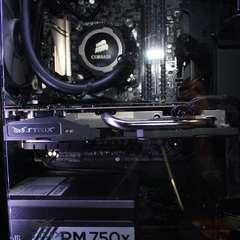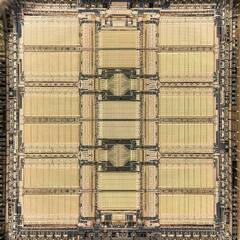
sphbecker
-
Posts
284 -
Joined
-
Last visited
Reputation Activity
-
 sphbecker reacted to mynameisjuan in BGP is layer 7...debate me
sphbecker reacted to mynameisjuan in BGP is layer 7...debate me
I mean yes, but that is steering away from the underlying concept and purpose of the OSI and TCP/IP model. Again, they are models, not strict guidelines in the same vein that RFCs are not standards. It's really intended associate functions to the layers that they are involved in on the wire or in the forwarding domain. This is what I was saying and leads into my next statement.
I said "almost every protocol" not every protocol which as you mentioned would leave only Eth, IP/ISO, TCP/UDP (debatable) and a handful of others.
I mentioned L2/L3 headers because the model is really in the forwarding domain. Once you ignore that and encapsulation as the headers are stripped off with the final payload being the protocol in question being processed by the software (this is the entire concept of networking fundamentals), almost every protocol is now L7. Every control or routing protocol is processed in software and ignoring where it exist in the forwarding domain and focusing purely on the protocol itself, literally anything that does not consist of only an Eth and/or IP header cannot be anything other than L7 by this concept.
STP, ARP, IGMP, etc., well they just have an Eth header which is stripped off and the software processes the protocol, now it's L7. ICMP/ICMPv6, now it's L7. And it goes on and on, hence why I said this argument always leads to this same conclusion. You cannot make that claim without applying it elsewhere.
That is why the model has to be view from the scope of the forwarding domain else it would be essentially useless.
And that's my point. A router/switch consist of a control-plane and forwarding-plane. The FP is a paper weight without the control-plane which is the software that manages it. Any protocol that the device is running would mean it would have to be also classified as L7 by this argument because even down at L2, STP is still software communication across the network.
-
 sphbecker reacted to Lurick in BGP is layer 7...debate me
sphbecker reacted to Lurick in BGP is layer 7...debate me
BGP is as much a layer 7 application as any other routing protocol.
-
 sphbecker reacted to mynameisjuan in BGP is layer 7...debate me
sphbecker reacted to mynameisjuan in BGP is layer 7...debate me
Not the forum I expected to see this sort of thread. This has been argued to death over the past two decades enough where IETF has an RFC stating that not everything will fall neatly in the OSI model and the same goes for TCP/IP.
BGP is a routing protocol and an application and considered to be a L7. Because it leads to semantic arguments, a majority don't care if it's called L3 vs L7.
Technically correct if the argument is that it's at the application layer. BGP uses the TCP/IP model not OSI and as such, the application layer falls at L4.
-
 sphbecker got a reaction from RevGAM in Help me choose...4070, 7800 XT, or 7900 XT
sphbecker got a reaction from RevGAM in Help me choose...4070, 7800 XT, or 7900 XT
I played on the new 7800 XT last night. So far, it's working great! I am actually impressed with AMD's drivers, once installed, it automatically increased my Windows refresh rate to 144hz and enabled FreeSync, notifying me it was doing it with a single click to undo if it wasn't what you wanted. Those are both things I had to manually set with nVidia. Not a big deal if you understand the technology, but definitely a nice touch to help ensure less tech savvy gamers are getting full value from their equipment.
I didn't think about this until I saw the PCIe 4 bullet on the box, but my board only supports PCIe 3. I am sure it isn't a problem for this card, but I am glad I didn't spend extra on the 7900 XT or it might have been interface bottlenecked.
-
 sphbecker reacted to RevGAM in Help me choose...4070, 7800 XT, or 7900 XT
sphbecker reacted to RevGAM in Help me choose...4070, 7800 XT, or 7900 XT
Well, that sure was a visual death!
-
 sphbecker reacted to overbuilt_gaming in Help me choose...4070, 7800 XT, or 7900 XT
sphbecker reacted to overbuilt_gaming in Help me choose...4070, 7800 XT, or 7900 XT
It really depends on if you need the extra vram from the 7900xt based on the games you play. The only game I've seen come close to 20gb+ of vram usage is Diablo4 on ultra settings while running at 3440x1440 ultrawide. This also is with the high-res textures installed.
-
 sphbecker reacted to Agall in Help me choose...4070, 7800 XT, or 7900 XT
sphbecker reacted to Agall in Help me choose...4070, 7800 XT, or 7900 XT
7800 XT unless you play only ray-tracing games, then the 4070. The 7900 XT would warrant a PSU upgrade as well as be warranted only if you planned to upgrade to 4K in my opinion. With RX 7000 series, the higher the resolution, the higher you want to go for the extra memory bandwidth. The 7800 XT being pretty much perfect for 1440p on price and performance.
Even when discussing ray-tracing, neither the 7800 XT nor 4070 are going to do 'amazing' at it, so you're compromising either way. The RT performance on the 7800 XT being acceptable.
-
 sphbecker reacted to filpo in Help me choose...4070, 7800 XT, or 7900 XT
sphbecker reacted to filpo in Help me choose...4070, 7800 XT, or 7900 XT
it depends which games you play. At 1440p all of these cards shouldn't be bottlenecked by the 5800x but maybe the 7900 xt won't be ok on a 650w psu (if it's not a decent tier rated unit)
I'd say the 7800 XT but it does depend what games you play
-
 sphbecker reacted to Kilrah in File sync client for NAS
sphbecker reacted to Kilrah in File sync client for NAS
It's only payware if you want them to host and manage it like businesses may want, but the software is all open source and you can set up your own server as you want, many NAS OSes offer it as a one-click install app.
-
 sphbecker got a reaction from Chipsahoyz in Bought a house, was left this disaster. Help me
sphbecker got a reaction from Chipsahoyz in Bought a house, was left this disaster. Help me
Massive difference of opinion after taking a 2nd look. All that wiring mess that I assumed was your telephone wiring is actually your network!! Gasp!! That is NOT okay even for older Cat5 wiring. Whoever did that used wiring standards that are considered sloppy (but work) even for telephone. Networking is more sensitive, so that isn't okay. Okay, deep breaths...lol
You basically have three options. You can leave it as it is and hope for the best, just know that you might struggle to get full gigabit speeds over those cables, and would NEVER be able to get 2.5 or higher.
2) If you want to clean it up the right way, buy yourself a small wall mountable 12-port patch panel and punch-down tool and terminate the blue and white cables into that. Remove the block and all yellow cables. Then you use normal patch cables to connect the Gateway or Switch to the patch panel.
3) If you want to clean it up, but don't want to mess with a patch panel, then you can buy RJ45 end connectors and put them directly on to the blue and white cables. Watch a YouTube video on how to terminate a RJ45 cable. Practice a few times on spare cables before you do in on the real cables (because you don't have a lot of slack to work with and don't want to waste any). Once you do that, then those blue/white cables can plug directly into your gateway or switch.
This last option is the easiest and what most would probably do. It isn't technically correct based on network wiring standards because you don't want your in-wall cables connected directly to your equipment, but for home use, its fine. The main reason for the patch panel is that it stops you from having to touch your in-wall cables, which will make them less likely to break (they are probably solid so more brittle than a stranded cable). Also, for larger networks a patch panels are needed to keep cabling clean, but that only matters once you have a rack. If it was me, I would just do option 3 and call it a day.
I also see that is an 8-port switch, not a 5-port. I think I see a total of 6 connections, 4 on the switch and 2 into the Gateway, so it looks like you need to keep the switch.
-
 sphbecker reacted to Lurick in How to make a vlan on the router?
sphbecker reacted to Lurick in How to make a vlan on the router?
Well it's Cisco packet tracer (or at least that's what OP mentions) which I don't recall having functionality to connect to outside devices like CML does.
-
 sphbecker got a reaction from Mnky313 in Would it be possible to allow users to choose from multiple dhcp ranges using captive portal pfSense?
sphbecker got a reaction from Mnky313 in Would it be possible to allow users to choose from multiple dhcp ranges using captive portal pfSense?
This would take custom scripting, but probably possible. I suspect you would probably need the captive portal to create DHCP reservations for addresses .2-.10. DHCP servers do have policies, but those typically only allow for setting DHCP options, not choose between ranges on the same subnet. It is probably better to move the user to a different vlan based on their answer, but that may be impossible if you are not working with enterprise networking hardware.
Random tip that makes things like this easier...if you are going to make IP addresses within a subnet meaningful, then I typically suggest segmenting them using bits (like 1111 1100), not decimal numbers (like 10-20). It may not be as pretty to a human, but will work better for IP based rules. What I mean, is instead of using .2-.10 as a special range, make it .2-.15, that way you know any host with 0000xxxx in the last octet is in that range. Honestly, you would probably want to use .16-.31 instead...making 0001xxxx that range, that leaves .1 alone. Then if you want to be pure, you would make your normal DHCP range .128 - .254, so that you know anything with a 1xxxxxxx address is a normal client. If you need more addresses, then make 64-254, then 01xxxxxx or 1xxxxxxx are both your client range.
It might sound confusing to setup, but it is basically a poor-man's vlan. I have done this on smaller professional networks, so that it was very easy see the different between a wired client, wireless client, and a printer without having to deploy vlans.
-
 sphbecker got a reaction from Alex Atkin UK in Help me find a good Wifi connector please?
sphbecker got a reaction from Alex Atkin UK in Help me find a good Wifi connector please?
Really sorry but it looks like I recommended a discontinued product. Here are two cards you can buy that still use an Intel chipset. These are both from no-name companies, but keep in mind that it is the Intel chip you are getting, the card itself it basically just a PCIe to M.2 adaptor. Most of the name brand cards use broadcom chipsets, which work, but most people will tell you Intel is the gold standard. With these cards, you just need to install the Intel drivers, no need to install anything from these company's webpage.
https://www.newegg.com/fenvi-fv-axe3000-pci-express/p/0XM-00JK-000A1?Item=9SIADXZE416894&Description=AX210 card&cm_re=AX210_card-_-9SIADXZE416894-_-Product&cm_sp=SP-_-489007-_-0-_-6-_-9SIADXZE416894-_-AX210 card-_-ax210-_-3
https://www.newegg.com/teday-td-ax210-pci-express/p/0XM-01CY-00041?Description=AX210 card&cm_re=AX210_card-_-0XM-01CY-00041-_-Product&quicklink=true
-
 sphbecker got a reaction from seon123 in Record webcam while on a call
sphbecker got a reaction from seon123 in Record webcam while on a call
Perfect, that is exactly what I was looking for! (clearly not an OBS expert here). I will test that out and give it a try on the next meeting.
-
 sphbecker got a reaction from DanielOng293 in Constant Crashing
sphbecker got a reaction from DanielOng293 in Constant Crashing
Here are the standard BSOD troubleshooting for those kinds of errors.
Remove any newly installed hardware Rollback any recently updated drivers Run whatever hardware diagnostics your board has (memory test at a minimum) Ensure components are not overheating Reseat memory Reseat CPU See if issue happens with each individual memory stick See if issue happens without the GPU (if IGP is an option on your system) Remove non-essential hardware one at a time -
 sphbecker reacted to TheBean in Remote Support Suggestions??
sphbecker reacted to TheBean in Remote Support Suggestions??
if you will be providing windows 10 support, windows already has a built in remote suppport option for free. It is called quick assist. only avialable on windows 10. not sure if there are any limitations with the business thing
-
 sphbecker got a reaction from NewMaxx in Raid 0 on Nvme SSD's on Mainboard
sphbecker got a reaction from NewMaxx in Raid 0 on Nvme SSD's on Mainboard
Keep in mind that RAID may be faster in RAW transfer rates, but it also has overhead and requires additional processing. When you are dealing with drives as fast as NVMe, you take a big risk of that overhead and extra processing actually slowing down your access. Also, RAID 0 puts you at greater risk and makes it MUCH harder down the road if you need to replace the motherboard or switch out one of the SSDs.
-
 sphbecker got a reaction from BecauseICanTBH in Ryzen 5 1600 af
sphbecker got a reaction from BecauseICanTBH in Ryzen 5 1600 af
Just order that one, everything else is correct on the listing, probably just a mistake for those two fields that mention Intel. If you get the wrong thing, send it back, Amazon should cover return shipping in that situation.
-
 sphbecker got a reaction from Ben17 in Raid 0 on Nvme SSD's on Mainboard
sphbecker got a reaction from Ben17 in Raid 0 on Nvme SSD's on Mainboard
Keep in mind that RAID may be faster in RAW transfer rates, but it also has overhead and requires additional processing. When you are dealing with drives as fast as NVMe, you take a big risk of that overhead and extra processing actually slowing down your access. Also, RAID 0 puts you at greater risk and makes it MUCH harder down the road if you need to replace the motherboard or switch out one of the SSDs.
-
 sphbecker got a reaction from GDRRiley in Ryzen 5 1600 af
sphbecker got a reaction from GDRRiley in Ryzen 5 1600 af
Just order that one, everything else is correct on the listing, probably just a mistake for those two fields that mention Intel. If you get the wrong thing, send it back, Amazon should cover return shipping in that situation.
-
 sphbecker got a reaction from Kilrah in Ryzen 5 1600 af
sphbecker got a reaction from Kilrah in Ryzen 5 1600 af
Just order that one, everything else is correct on the listing, probably just a mistake for those two fields that mention Intel. If you get the wrong thing, send it back, Amazon should cover return shipping in that situation.
-
 sphbecker reacted to minibois in Keeping Mouse Cool?
sphbecker reacted to minibois in Keeping Mouse Cool?
I used to have quite sweaty hands with controllers, but that has kind gone away over the years. Perhaps you could try to see if a different material has you sweat a bit less?
Or maybe it's your certain way of holding the mouse - your grip - that is making it hotter than necessary.
If all else fails and you feel like you are abnormally seating, it may be have to contact a doctor to see if that is normal. I'm not a doctor, so I am not sure if this is weird or not
-
 sphbecker got a reaction from mtz_federico in pfSense - router + stateful firewall + vpn HW requirements?
sphbecker got a reaction from mtz_federico in pfSense - router + stateful firewall + vpn HW requirements?
One question I am surprised has not come up (I didn't ask it either). Are you using VPN with a tunnel provider for all your internet traffic, or are you setting up a VPN service so you can access your own network remotely? If the 2nd, then don't worry about sizing the router for VPN needs. There is a HUGE different between the VPN needs of a business and a home. For a small businesses you might expect a dozen or more users connected at a time transferring meaningful amounts of data while local users are also hitting the router, or you might have a situation where all local traffic is being sent to another site over a VPN tunnel. Both of those scenarios puts a meaningful load on the CPU. If you just have VPN for the very occasional remote connection into your own stuff, then don't bother adding extra CPU for that purpose. A single user isn't going to create much of a load and I highly doubt you will be pushing gigabit levels of traffic across VPN
If you are doing all traffic over VPN, then yes, that will requite more CPU.
-
 sphbecker got a reaction from mtz_federico in I have 45$ to buy some sort of wireless networking card what do you recommend?
sphbecker got a reaction from mtz_federico in I have 45$ to buy some sort of wireless networking card what do you recommend?
I think you misread my post. I was rebutting your comment when you said "There is virtually no difference between these and an Ethernet cable." There are huge differences in the way the technology works, that was my post. Power-line is functionally more like WiFi than it is to Ethernet. If you want an analogy, WiFi is like a microphone that picks up sound-waves in the air. Power-line is like the needle on a record player that picks up sound-waves carved in to vinyl. Ethernet is like getting sound from an optical audio cable. The first two both deal with vibrations, the last one is sound modulated into a digital format and transmitted with EM waves. Ethernet is a direct switching technology, WiFi and Power-line are both RF. Just read a little about how HomePlug AV2 works, you will see terms like "2x2 MIMO," which sure sound a lot like terms you hear when talking about WiFi (because it is basically the same technology modified for power-line use...my point).
I think the misunderstanding is that I was talking about how the technologies work and you are making comments about how well they work. So lets shift gears.
Yes, in theory power-line should work better than WiFi because the transmission medium is a more controlled environment with less noise. All things being equal, power-line would be the clear winner. In reality, far more research and development has been done for WiFi. WiFi's latest standards blow the doors off anything power-line can currently do, and based on the rate at which power-line technology is released, we shouldn't expect that to change anytime soon.
It is not that sending bits over the airwaves is a better idea, its really isn't. It is that you have vastly more sophisticated technology backing WiFi than you do with Power-line.
-
 sphbecker got a reaction from mtz_federico in I have 45$ to buy some sort of wireless networking card what do you recommend?
sphbecker got a reaction from mtz_federico in I have 45$ to buy some sort of wireless networking card what do you recommend?
To each their own, but I am not a huge fan of power-line, unless you have a specific use case that makes WiFi problematic. The "its wired so its better" line of thinking doesn't really apply to power-line. Power-line is basically a wireless signle transmitted over your copper power lines instead of the airwaves. It has many of the same concerns you hear about WiFi, as well as entirely new issues (such as single drops when a vacuum cleaner is in use).









